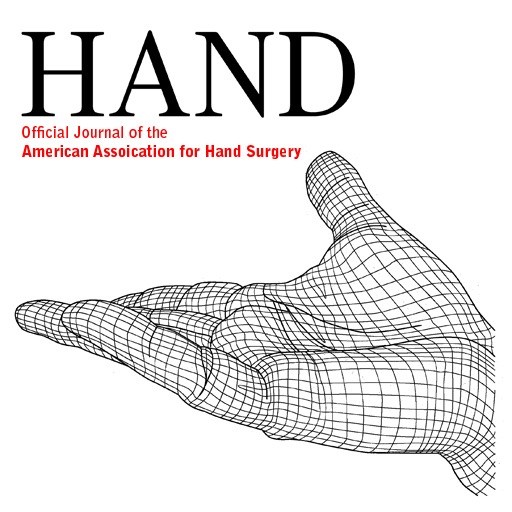
Effect of continued nightly splinting on extensor lag in patients with mallet finger

Effect of continued nightly splinting on extensor lag in patients with mallet finger
A prospective randomized controlled trial comparing night splinting with no splinting after treatment of mallet finger
Hand (N Y). 2014 Jun;9(2):145-50Did you know you're eligible to earn 0.5 CME credits for reading this report? Click Here
Synopsis
59 patients (>18 years of age) who were diagnosed with mallet finger (with or without fracture) and who had undergone continuous splint/cast immobilization and hyper-extension intervention (6-8 weeks), were randomly assigned into 1 of 2 treatment groups to determine the effect of an additional one month of night splinting on extensor lag. Participants either received an additional one month intervention with a night splint following their continuous splinting period or received no additional intervention (control). Results from the study demonstrated that no significant differences existed between the two groups by final follow-up when comparing the final extensor lag, disability, or treatment satisfaction experienced by patients.
Was the allocation sequence adequately generated?
Was allocation adequately concealed?
Blinding Treatment Providers: Was knowledge of the allocated interventions adequately prevented?
Blinding Outcome Assessors: Was knowledge of the allocated interventions adequately prevented?
Blinding Patients: Was knowledge of the allocated interventions adequately prevented?
Was loss to follow-up (missing outcome data) infrequent?
Are reports of the study free of suggestion of selective outcome reporting?
Were outcomes objective, patient-important and assessed in a manner to limit bias (ie. duplicate assessors, Independent assessors)?
Was the sample size sufficiently large to assure a balance of prognosis and sufficiently large number of outcome events?
Was investigator expertise/experience with both treatment and control techniques likely the same (ie.were criteria for surgeon participation/expertise provided)?
Yes = 1
Uncertain = 0.5
Not Relevant = 0
No = 0
The Reporting Criteria Assessment evaluates the transparency with which authors report the methodological and trial characteristics of the trial within the publication. The assessment is divided into five categories which are presented below.
3/4
Randomization
2/4
Outcome Measurements
2/4
Inclusion / Exclusion
4/4
Therapy Description
4/4
Statistics
Detsky AS, Naylor CD, O'Rourke K, McGeer AJ, L'Abbé KA. J Clin Epidemiol. 1992;45:255-65
The Fragility Index is a tool that aids in the interpretation of significant findings, providing a measure of strength for a result. The Fragility Index represents the number of consecutive events that need to be added to a dichotomous outcome to make the finding no longer significant. A small number represents a weaker finding and a large number represents a stronger finding.
Why was this study needed now?
Following the occurrence of mallet finger, a variety of adverse events can occur, with the most prominent event being extensor lag. The effect night splinting has on this adverse event following a continuous splinting period (6 to 8 weeks) is currently unknown, and so, the goal of this study was to determine if there is any positive correlation between the two.
What was the principal research question?
After 6-8 weeks of continuous splint or cast immobilization for mallet finger, is there a difference in residual extensor lag between those who continued intervention with nightly splinting for 1 month versus those who did continue with nightly splinting?
What were the important findings?
- Average extensor lag experienced by patients within the study was 14 degrees (range 0 to 42). 6 patients in the night splint group and 8 in the control group had final extensor lag of 20 degrees or greater. The difference between groups regarding this outcome was not significantly different (p>0.05).
- Final extensor lag significantly correlated with age (p=0.006), final FIP flexion (p=0.005), enrollment extensor lag (p=0.001), and enrollment DIP flexion (p=0.014).
- Enrollment lag and follow-up DIP flexion accounted for 28% of the variation in final extensor lag (p<0.001).
- Mean DASH score and satisfaction levels were comparable between the two groups at final follow up (p=0.67 and 0.48, respectively). Mean DASH among participants in the study was 8.8 (range 0 to 54) by final follow up and, 8.2 with regard to satisfaction score (range 0 to 10).
What should I remember most?
No significant differences existed between the two groups by final follow up when comparing final extensor lag, disability, or treatment satisfaction. Significant correlations between extensor lag and age, enrollment distal interphalangeal joint (DIP) flexion and extensor lag, and final DIP flexion was observed.
How will this affect the care of my patients?
The results of this study suggest that supplemental night splitting does not improve the outcome of mallet finger with regard to extensor lag, disability, or treatment satisfaction. Patient preference should be considered in decision-making processes. Further research with a larger sample size and longer follow up period is warranted.
Learn about our AI Driven
High Impact Search Feature
Our AI driven High Impact metric calculates the impact an article will have by considering both the publishing journal and the content of the article itself. Built using the latest advances in natural language processing, OE High Impact predicts an article’s future number of citations better than impact factor alone.
Continue



 LOGIN
LOGIN

Join the Conversation
Please Login or Join to leave comments.